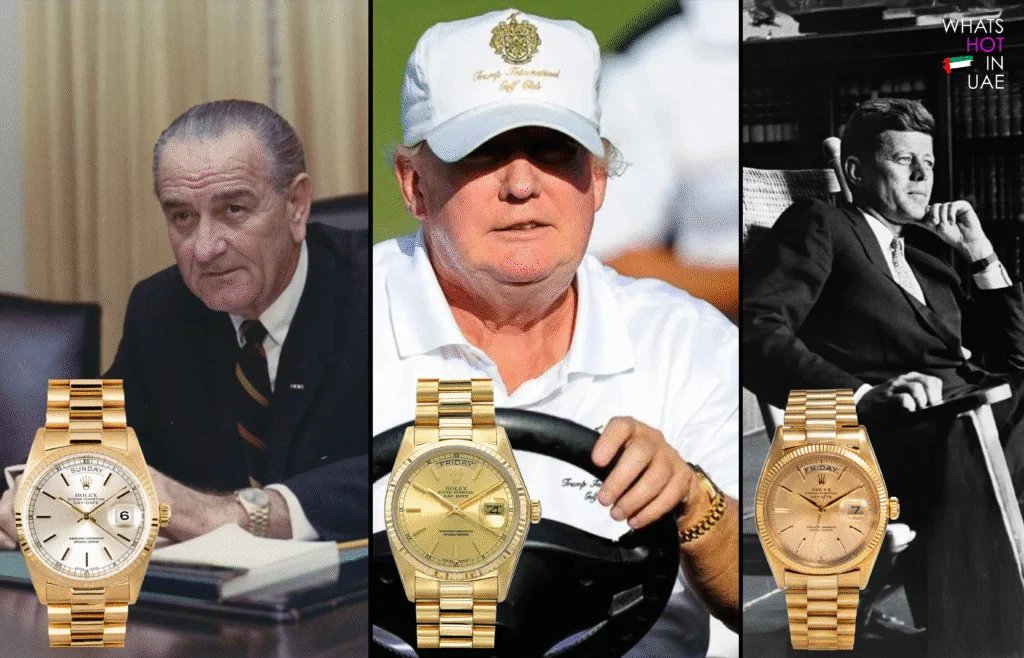Since its inception, Rolex has stood as a towering icon in the realm of Swiss watchmaking. A symbol of unrivalled craftsmanship and timeless design, the Rolex name is synonymous with prestige, wealth, and power. Among its prestige offerings, the Rolex Gold Day-Date, famously dubbed the “President’s Watch,” reigns supreme at the top of Rolex’s luxury food chain. While the brand’s most popular offerings like the Submariner, GMT-Master, Explorer, and Datejust have earned adoration from collectors and enthusiasts globally, one timepiece reigns supreme at the top of Rolex’s luxury food chain: the Rolex Day-Date, also famously dubbed the “President’s Watch.”
Introduced in 1956, the Rolex Day-Date became the world’s first wristwatch to display both the date and the full day of the week spelt out in an arched window at the 12 o’clock position. It was an innovation that not only marked a technological leap but also carved the Day-Date’s unique place in horological history.
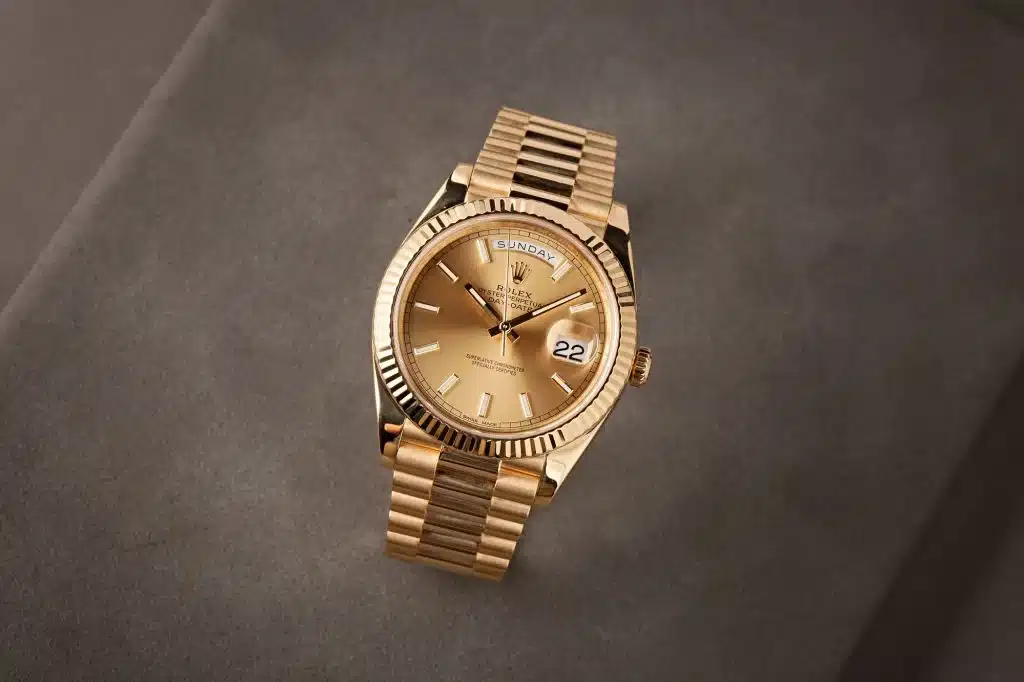
The Genesis: From Wilsdorf & Davis to Rolex Royalty
Founded in 1905 by Hans Wilsdorf and Alfred Davis, Rolex began its life as Wilsdorf & Davis in London. By 1908, Wilsdorf registered the name “Rolex”—a word with no meaning, chosen for its brevity, easy pronunciation in various languages, and symmetry. It wouldn’t take long for the brand to etch itself into the hearts of collectors.
Fast-forward to 1956, Rolex shifted from complicated models like the 1949 Triple Calendar Moonphase (Ref. 8171, aka Padellone) and the 1950 Oyster-cased Ref. 6062 (Stelline), towards simplicity married with elegance. Both these earlier models were discontinued by 1953, paving the way for a more refined interpretation of prestige: the Day-Date.
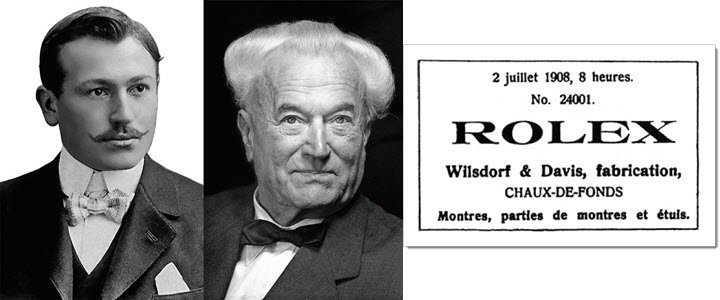
Rolex Gold Day-Date Day-Date Ref. 6510 & 6511 (1956–1957): Breaking New Ground
The original Day-Date came in two versions—Ref. 6510 with a smooth bezel and Ref. 6511 with a fluted bezel—crafted exclusively in yellow, pink, or white gold. This exclusivity in precious metals has continued throughout the model’s history, with one minor anomaly we’ll explore later.
What set this watch apart was the patent-pending mechanism developed by Rolex engineer Marc Huguenin (Swiss patent CH322341A, 1955), allowing the full spelling of the weekday alongside the date. The 36mm Oyster case with a twin-lock crown enabled 100 metres of water resistance—remarkable for a dress watch of that era. The original models featured champagne or rare black dials with applied gold indices and Dauphine hands, topped with acrylic crystal.
Although beautiful, early models had technical flaws with date advancement, leading to their quick replacement.
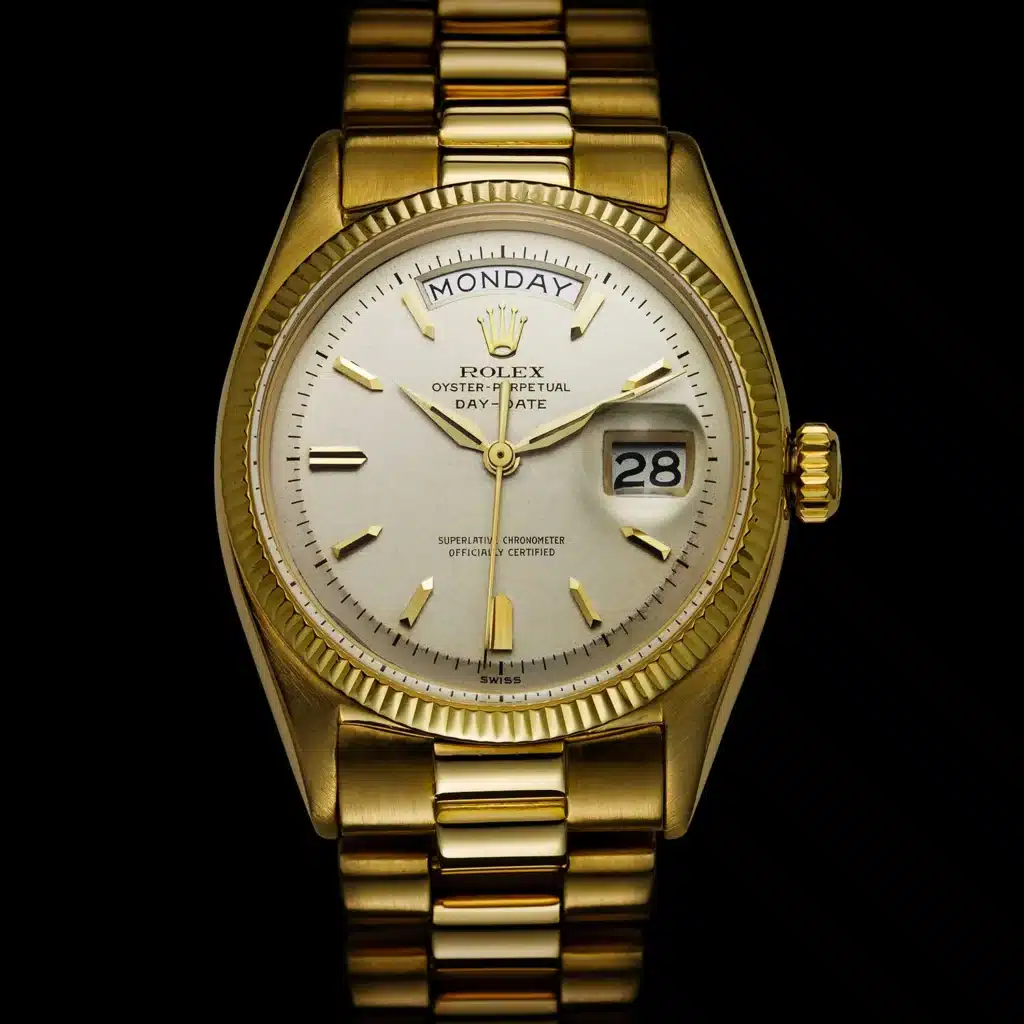
Rolex Gold Day-Date Ref. 6611 (1957–1959): The First Superlative Chronometer
Ref. 6611 addressed mechanical issues with a new Calibre 1055. With 25 jewels and a 2.5Hz beat rate, it became the first Rolex to feature the “Superlative Chronometer Officially Certified” designation. Cosmetic changes included Alpha hands and pie-pan dials. The President bracelet also became standard—marking the beginning of the watch’s nickname.
Though not officially tied to any president initially, this model would later be associated with Lyndon B. Johnson, Richard Nixon, Ronald Reagan, and others, cementing the Day-Date’s place in American political history. Rolex ads during Johnson’s presidency proudly called it the “President’s Watch.”
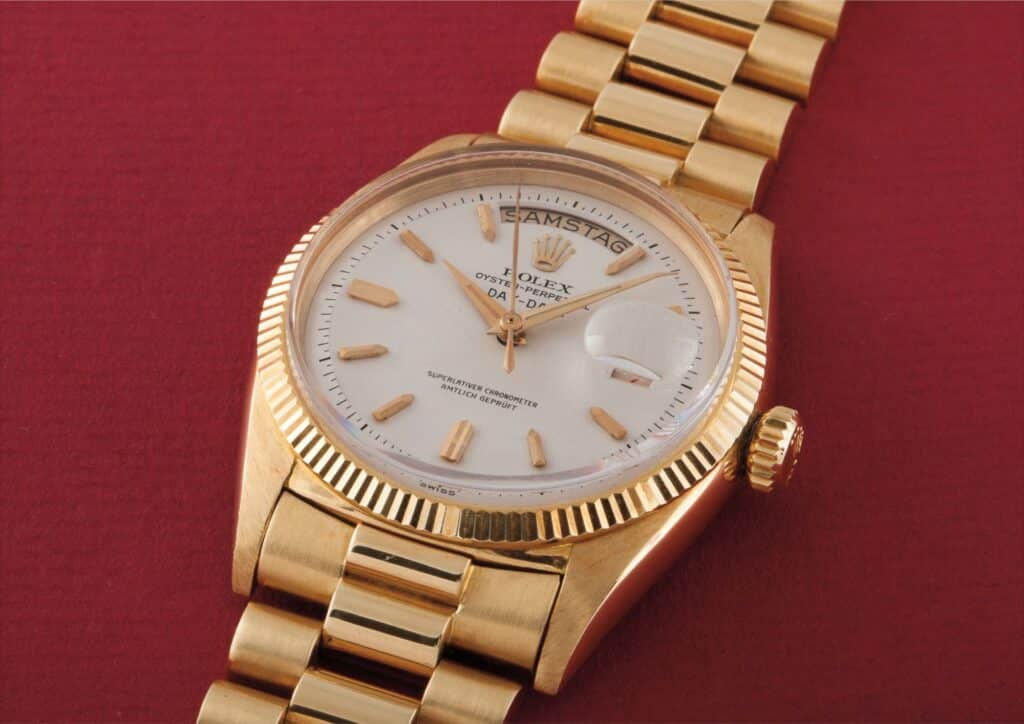
Stainless Steel Day-Dates: The Mythical Unicorns
While Day-Dates are exclusively crafted in precious metals, five known examples of the Ref. 6611 exist in stainless steel—likely prototypes. One sold for CHF 50,600 in 2002; another fetched CHF 170,100 in 2022. These pieces are considered the Holy Grail by Rolex aficionados.
Rolex Gold Day-Date Ref. 1803 (1959–1976): The Classic Era
This reference saw updates including a pie-pan dial and Calibre 1555, later upgraded to 1556. The movement introduced a higher beat rate of 19,800vph and added a hacking feature in 1972. These were Rolex’s first fully in-house movements for the Day-Date.
The bracelet was still hollow, and the acrylic crystal was retained. The 1803 is considered a gateway for collectors due to its affordability on the secondary market—often selling for under AED 30,000.
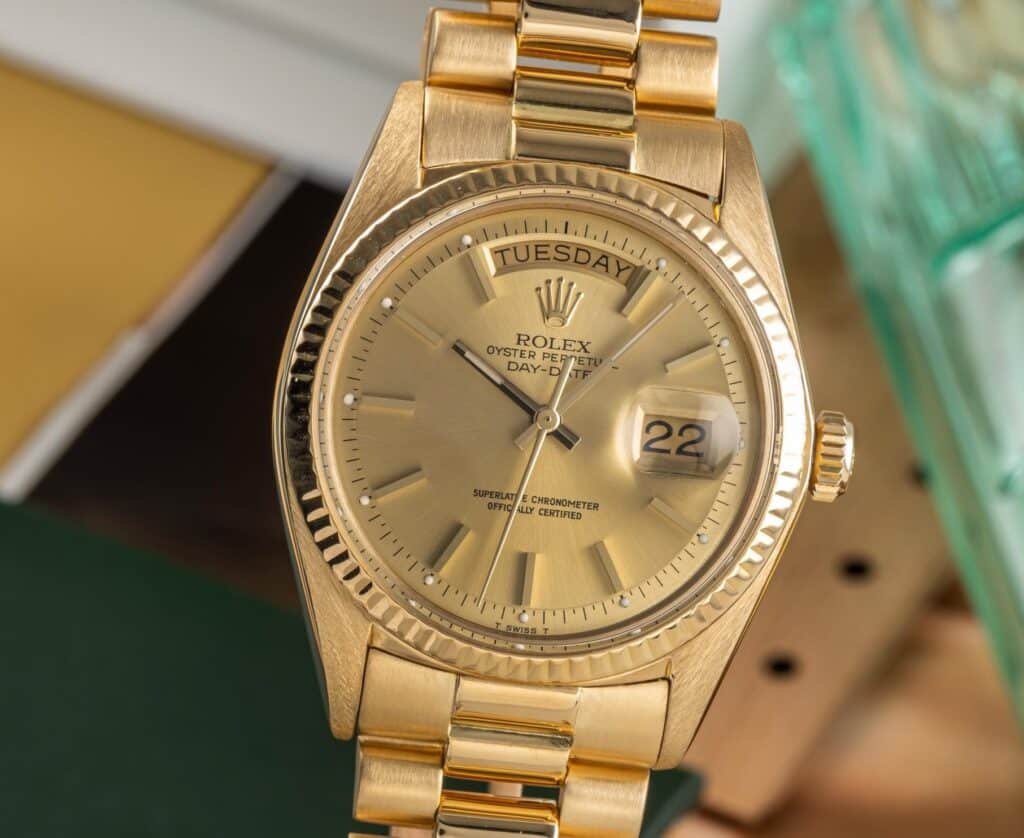
Rolex Gold Day-Date Ref. 18038 (1977–1988): Modernisation Begins
The shift to Calibre 3055 brought the quickset date feature and a move to sapphire crystals. Though the day had to be manually advanced, the movement’s 4Hz beat rate and COSC certification made it a performance marvel. The Day-Date finally embraced modern standards.
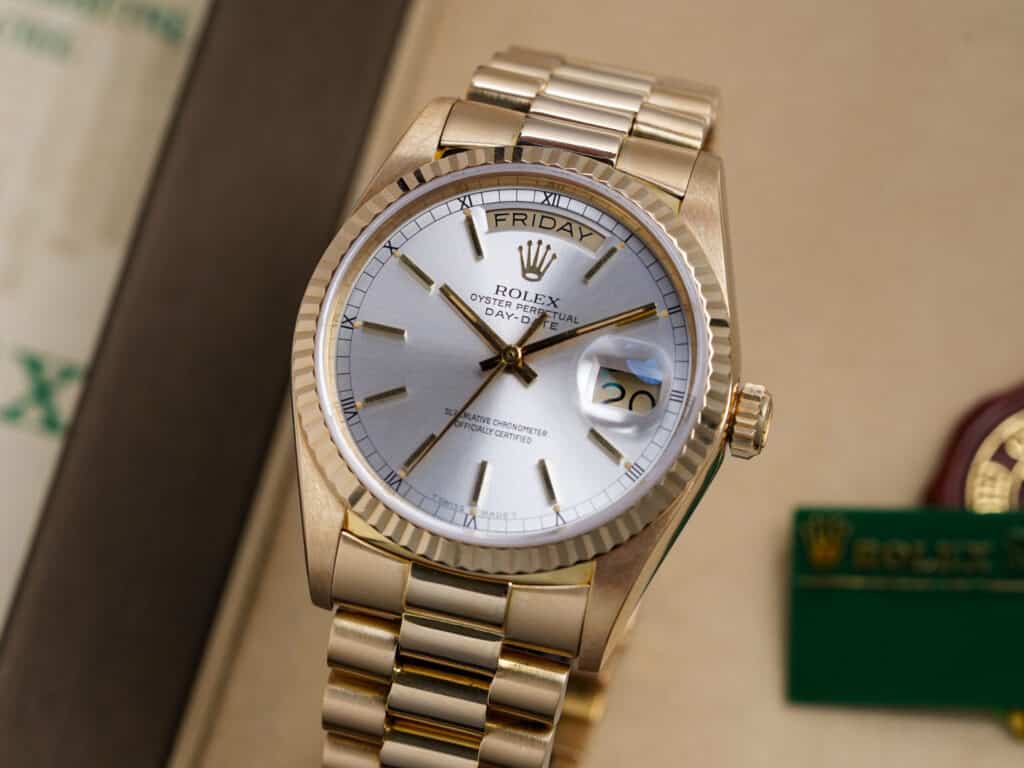
Quartz Revolution: Ref. 19018 & Calibre 5055 (1977–2004)
Amid the Quartz Crisis, Rolex introduced the Day-Date Oysterquartz with Calibre 5055. Highly accurate and COSC-certified, it came with an integrated bracelet and distinct angular case design. Though only 25,000 units were produced, the ref. 19018 remains a collector’s gem.
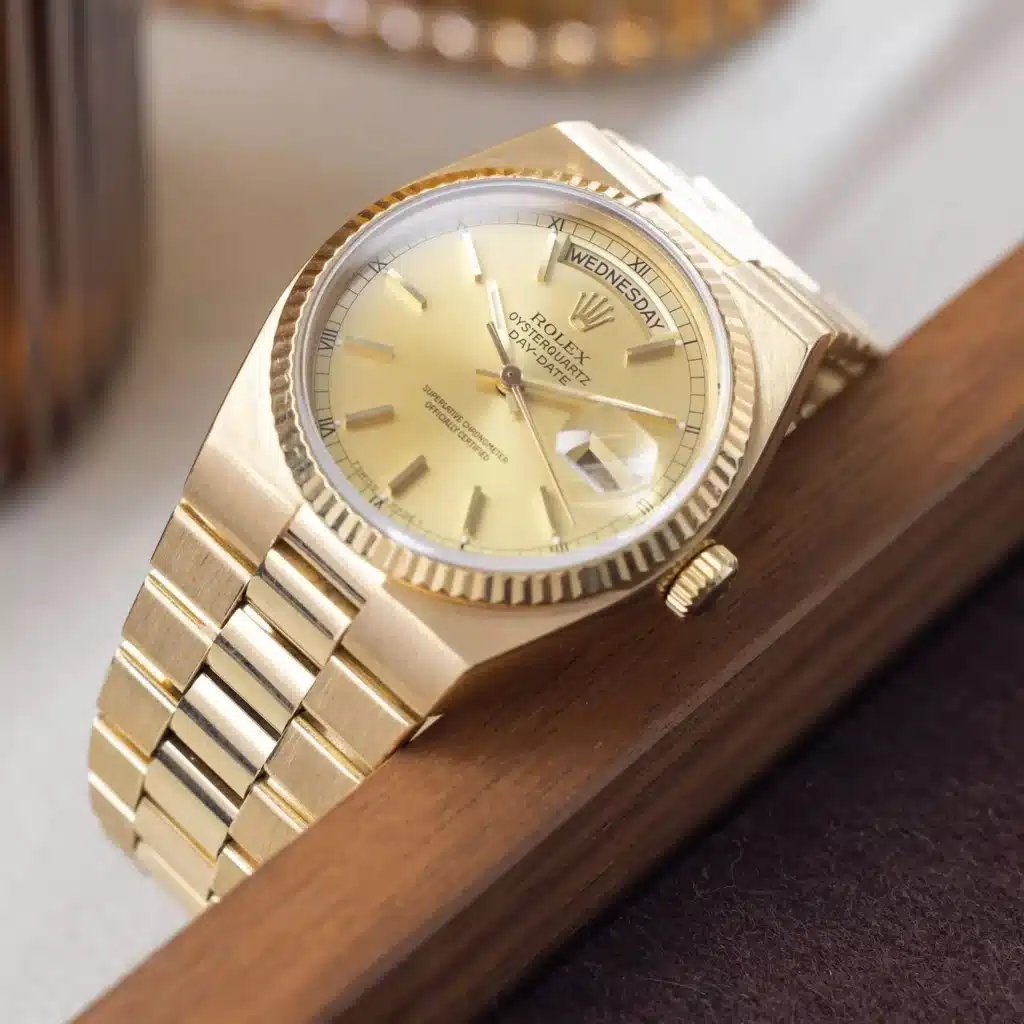
Rolex Gold Day-Date Ref. 18238 (1988–2000): The Double Quickset Revolution
With Calibre 3155, the Ref. 18238 allowed both day and date to be set directly from the crown. The improved movement had 31 jewels and a thinner profile, with Rolex gradually tightening its chronometer standards over time.
Designs included champagne dials with vertical stripes, and the President bracelet was still the star of the show.
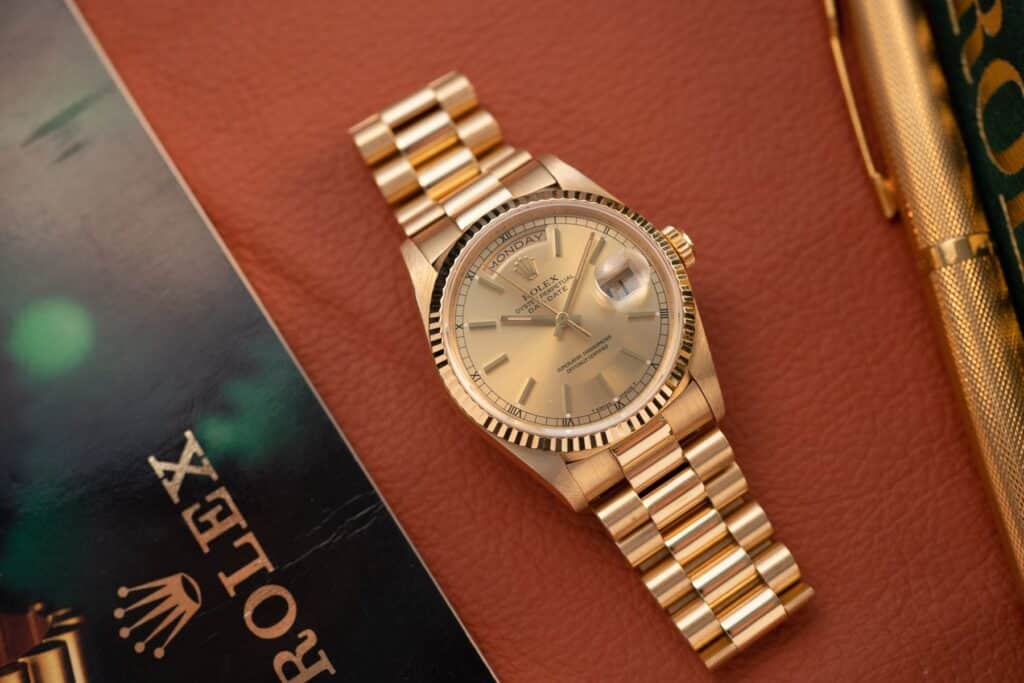
Ref. 118238 (2000–2009): Heavier and Smarter
The case received broader lugs, and the bracelet links became solid gold, adding heft and luxury. Rolex also engraved ROLEX ROLEX ROLEX on the rehaut as a counterfeiting measure. Although the movement remained Calibre 3155, it was later regulated to Rolex’s in-house Superlative Chronometer standard: -2/+2 seconds per day.
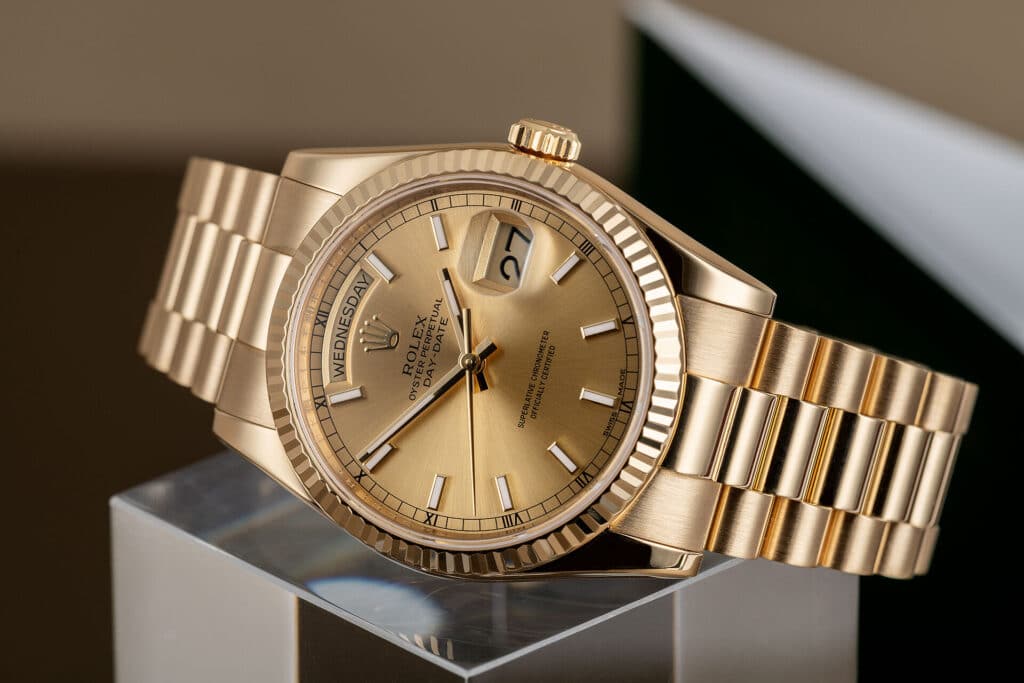
Day-Date II Ref. 218238 (2008–2015): Bigger, Bolder, Divisive
Rolex celebrated its centenary with a 41mm Day-Date II. Featuring Calibre 3156 with Parachrom hairspring and Paraflex shock absorbers, it maintained the classic DNA but had bulkier lugs and bezel, which polarised collectors. Ceramic bracelet inserts were introduced for longevity.
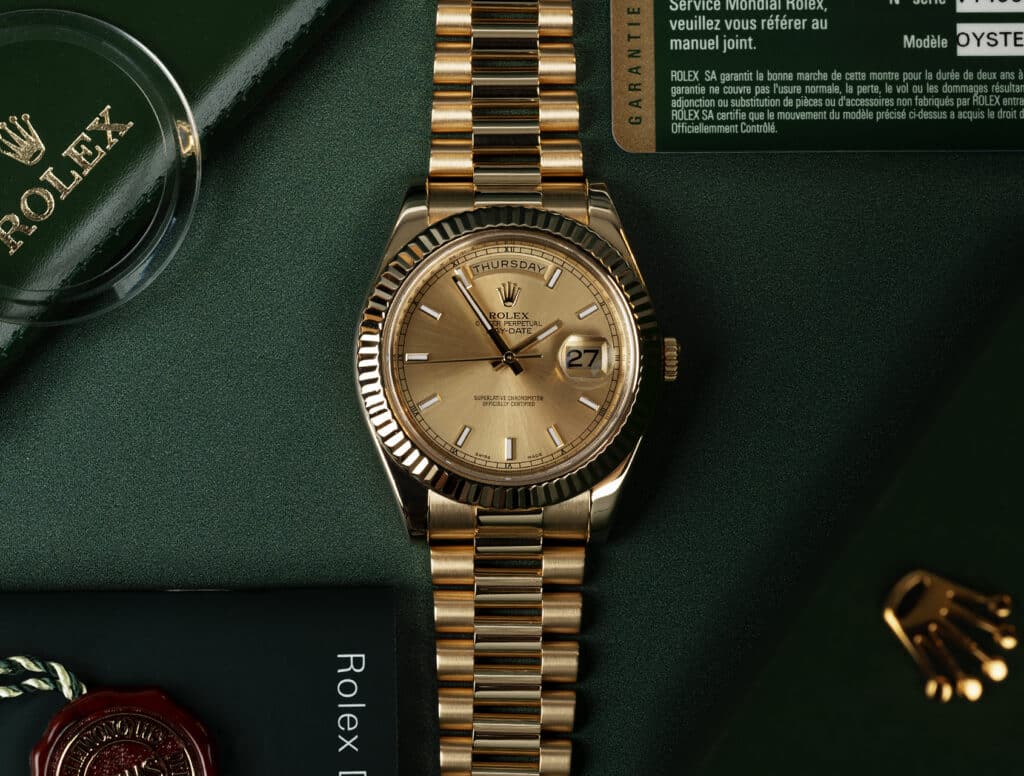
Rolex Gold Day-Date 40 Ref. 228238 (2015–Present): Perfection Refined
The current flagship, Day-Date 40, brought elegance back. With refined proportions and slimmer lugs, it was the true successor to the classic 36mm variant. Calibre 3255 debuted with the Chronergy escapement, offering a 70-hour power reserve and unparalleled resistance to magnetism. The entire watch was a testament to Rolex’s relentless pursuit of precision.
Laser-etched dials, ceramic bracelet inserts, and the extended language offerings (now 26) for the day display made this a global watch for global leaders.
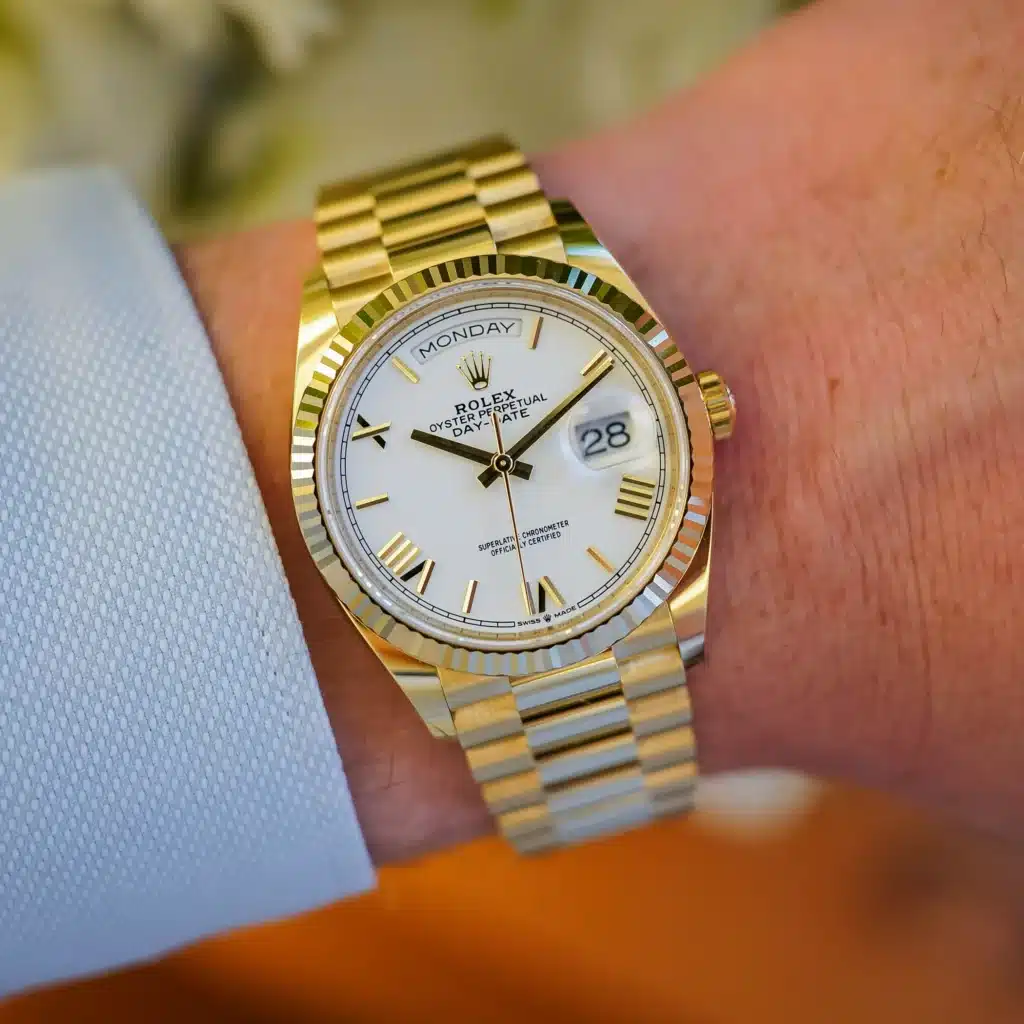
The Presidential Legacy
From Lyndon B. Johnson to contemporary figures, the Rolex Day-Date has become shorthand for success and authority. JFK’s gifted watch from Marilyn Monroe, which resurfaced decades later, only adds to the mystique. While that particular piece was never worn and eventually discarded, it symbolised the Day-Date’s emotional and cultural weight.
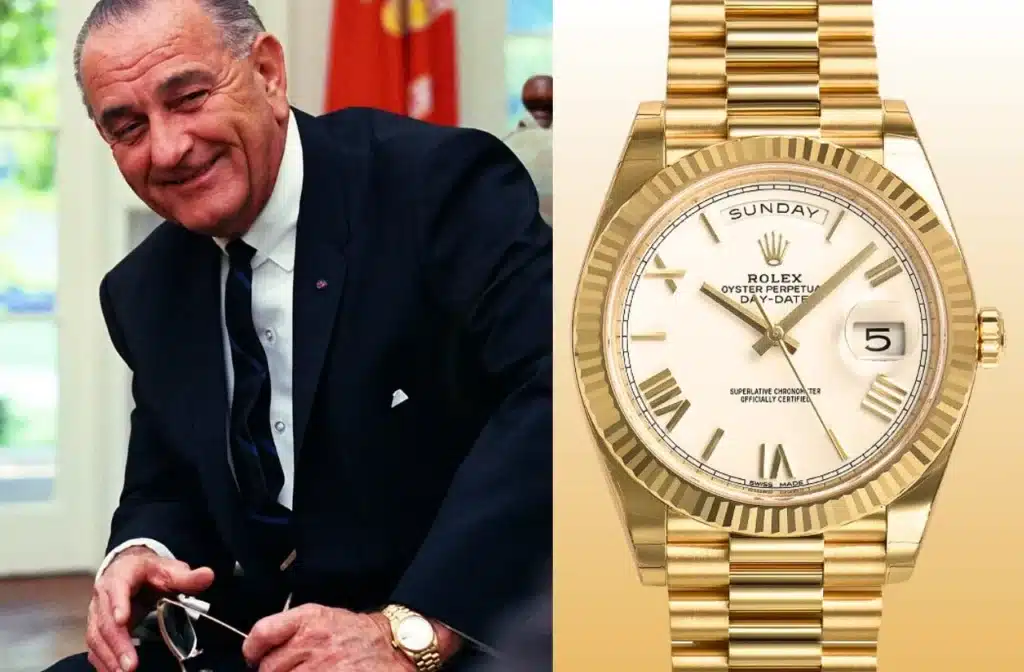
For Collectors and Investors
Despite being a precious metal timepiece, the Day-Date is surprisingly accessible. Clean examples of Ref. 1803 on bracelets can be found for around AED 44,000, offering a vintage aesthetic with timeless prestige. For those seeking investment-grade pieces, rare variants and stainless-steel anomalies can fetch sky-high prices at auctions.
The thrill of collecting Day-Dates lies in its vast history, design evolutions, and wide array of dial/bracelet configurations. Whether you’re looking for your first trophy timepiece or your next grail watch, the Day-Date offers something truly iconic.



